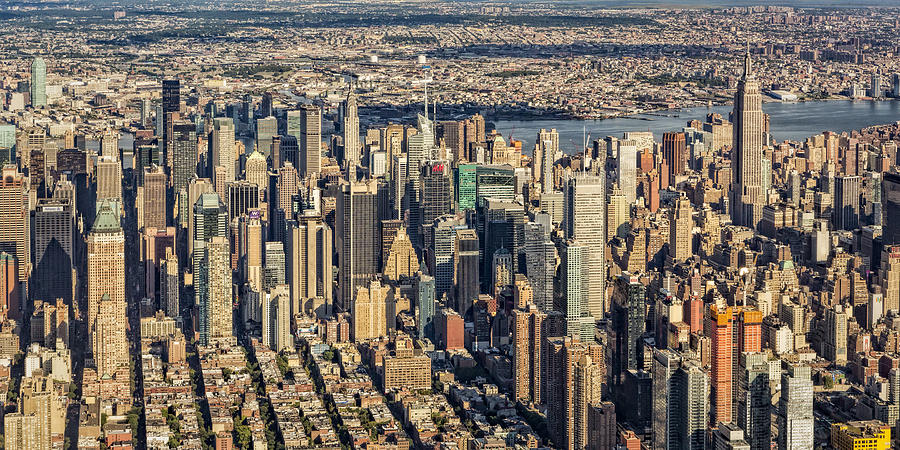With remote work here to stay, cities around America are faced with a difficult challenge. Most office buildings won't be redeveloped into residential (floor plates either can't be converted, or cost is prohibitive), but they will also be under-occupied.
What happens then?
What happens then?

The first possibility is that the market drives down rents to such an extent that occupancy rises. This won't quite work, however, & will bring great pain.
Modern office buildings are huge & have large fixed costs. Lower rent can't support critical building ops, & likely won't… twitter.com/i/web/status/1…
Modern office buildings are huge & have large fixed costs. Lower rent can't support critical building ops, & likely won't… twitter.com/i/web/status/1…

In this scenario, office landlords will give their keys back to their lenders of buildings worth 10s of millions of dollars to hundreds of millions of dollars.
Lenders will want to do whatever they can to get these assets off their books, and will sell at firesale pricing,… twitter.com/i/web/status/1…
Lenders will want to do whatever they can to get these assets off their books, and will sell at firesale pricing,… twitter.com/i/web/status/1…
This is starting to happen across America, but occupancy isn't budging. Remember, remote work is here to stay, and if people have a choice in where they work, CBDs will lose. These are sterile, dreary, and almost dystopian neighborhoods. Few will willingly go to these areas. 

This is something we've seen with malls and power centers. In a time where people had no other choice, these places thrived as they were the only game in town.
Now with optionality, they're all dying because they're not fundamentally desirable places to shop at.
Now with optionality, they're all dying because they're not fundamentally desirable places to shop at.

The lesson here isn't that retail is dead, but that bad retail is.
Small businesses that offer a compelling experience in dynamic walkable, desirable neighborhoods are thriving, e-commerce can't (and won't) kill them. But bad retail? It will return to the Earth as vacant lots.
Small businesses that offer a compelling experience in dynamic walkable, desirable neighborhoods are thriving, e-commerce can't (and won't) kill them. But bad retail? It will return to the Earth as vacant lots.

Just as Amazon can't (and won't) save every bad power center by putting a distribution center in, offices won't be saved by the few white night tenants that exist.
Just like dying malls, dying office buildings will be demolished. This won't be quick, however.
Just like dying malls, dying office buildings will be demolished. This won't be quick, however.

Staring down the prospect of taking losses in the tens to hundreds of millions of dollars, owners will hold out hope for their white knight. It will not come. Offices will sit vacant, or partially occupied, while the owners & cities bleed losses. The winners will cut bait.
This is no easy thing, but for those who redevelop sooner (and their lenders who facilitate), they will have a big advantage, and cities will be stronger in the long run.
We can reshape those mono-use, depressing, white collar dependent neighborhoods into truly desirable areas.
We can reshape those mono-use, depressing, white collar dependent neighborhoods into truly desirable areas.

The answer is not to double down on what's not working (and in truth, which never has), but to start anew to create a place that can be comprehensively successful and desirable.
This doesn't mean just pencil mixed-use on paper, but getting the scale, fabric, and form right.
This doesn't mean just pencil mixed-use on paper, but getting the scale, fabric, and form right.

The era of transactional, mono-use/use dependent urban development is over.
A sea of soulless office buildings is little different than a soulless row of tract housing, even when you sprinkle in corporate lunch chains to both. Truly diverse mixed-use areas will win!
A sea of soulless office buildings is little different than a soulless row of tract housing, even when you sprinkle in corporate lunch chains to both. Truly diverse mixed-use areas will win!

Cities have always demolished & built better. That is deep and inseparable legacy of the history of urban development. We cannot be so proud or so ignorant to deny this reality.
The best cities have always understood this. The winners for the next century will implement this!
The best cities have always understood this. The winners for the next century will implement this!
• • •
Missing some Tweet in this thread? You can try to
force a refresh





















